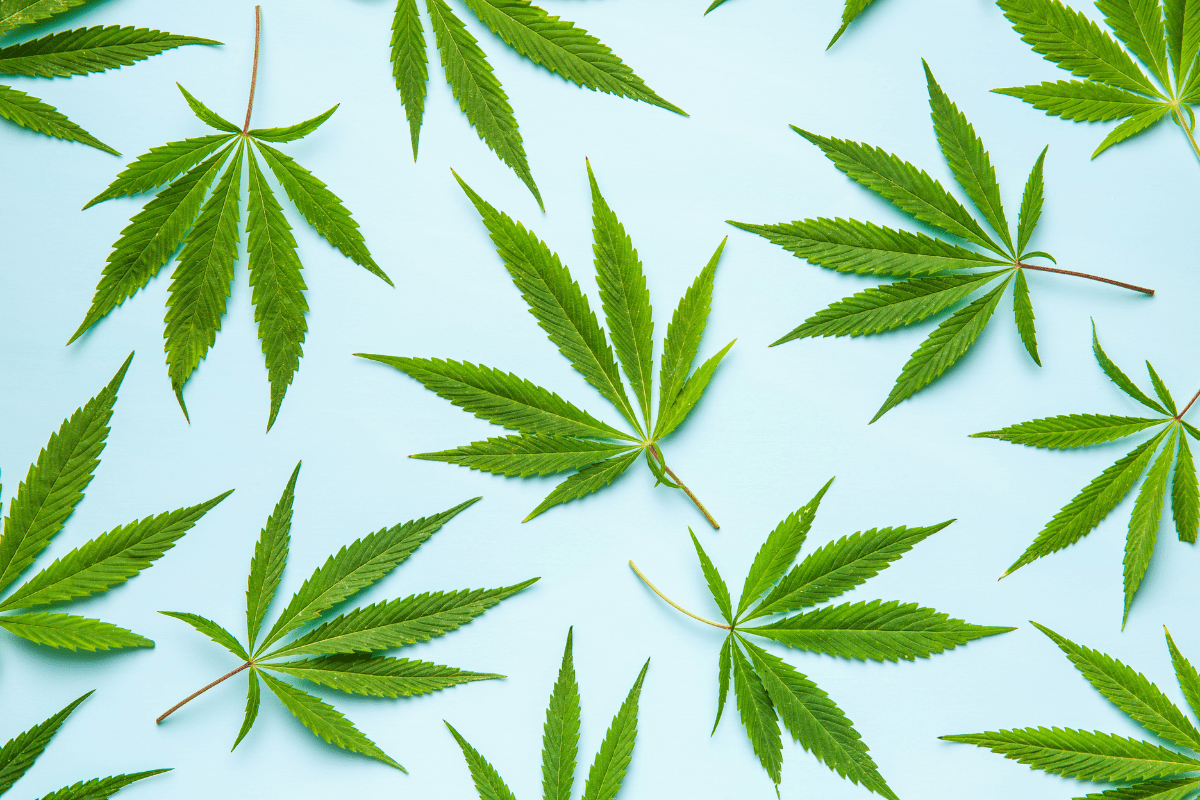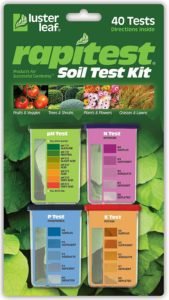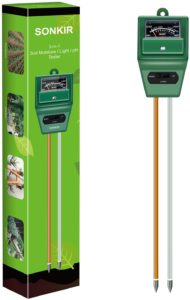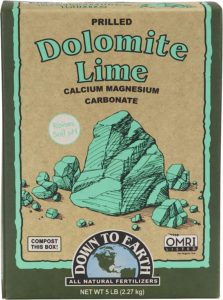Even though it’s not one of the primary nutrients, Magnesium is still one of many essential nutrients for cannabis plants. Magnesium deficiency in cannabis can wreak havoc on your crop.
Magnesium deficiencies give your plant a distinct stripy pattern on the oldest leaves. It is most commonly caused by bad pH levels in the soil.
Calcium also plays a major role alongside magnesium. If you’re facing a cannabis magnesium deficiency, you might also have a calcium deficiency too.
What Does Magnesium Do in Cannabis?
Cannabis plants do not require as big of qualities of magnesium as they do like nitrogen or potassium. Still, magnesium is absolutely essential for all plants. Plants need chlorophyll to photosynthesize. The chlorophyll molecule is a magnesium atom surrounded by nitrogen with a special structure attached.
Basically, without magnesium, the plant can’t make its own energy. But that’s not the only thing magnesium does in plants. Other things include:
- Activating enzymes
- Transferring energy
- Making DNA and RNA
- Making proteins
- Uptaking and transporting ions
- Dividing cells
Basically, without enough magnesium, your cannabis plants can’t do the plant functions that they need to grow.
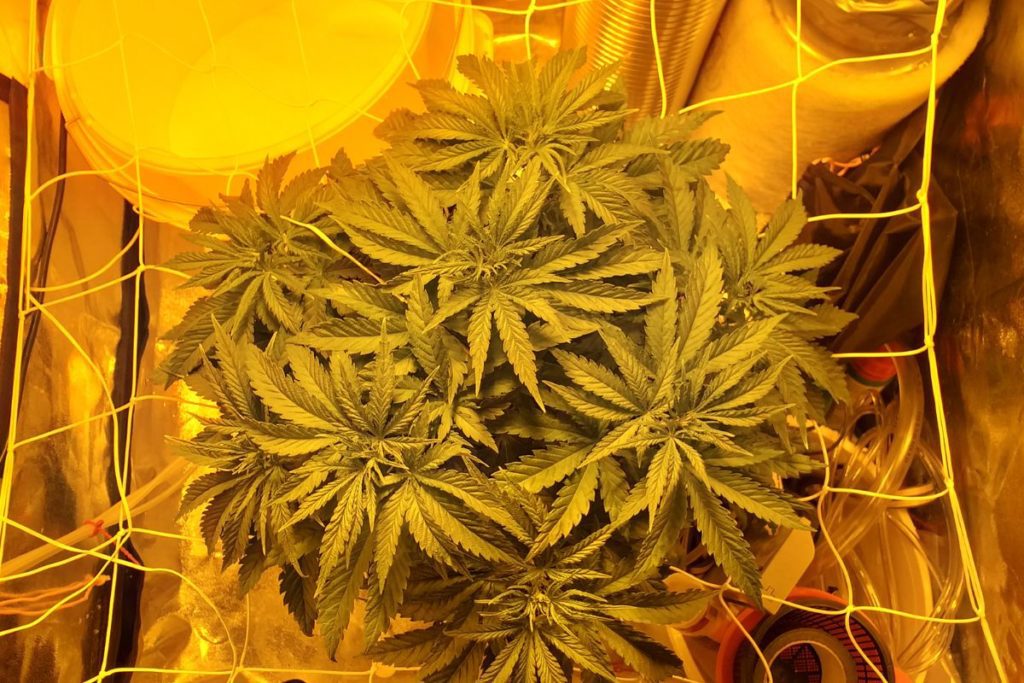
Calcium and Magnesium: A Match Made in Heaven
We can’t talk about what magnesium does in plants without talking about calcium too. In most of the processes listed above, calcium plays a major role too.
Both of these elements are taken via the same means. The marijuana plant absorbs them through cation exchange. Calcium and magnesium carry a positive charge, so the plant puts out its own positive cations to access the essential nutrients. These two need to be in a special ratio in the soil to be properly absorbed. This is why cal mag is sold as one product.
Potassium is also a large positive ion, so too potassium in the soil can cause absorption issues. It’s not uncommon for calcium and magnesium deficiencies to occur at the same time.
Now even though these two elements are involved in the same processes, calcium deficiencies show up on newer growth, while magnesium deficiencies show up on older growth. This is because magnesium is a mobile element, so the plant moves it around when faced with deficiency. Calcium isn’t, so calcium deficiencies show up wherever they grow.
If you’re dealing with a cal mag deficiency, it starts on the new growth first. Then you’ll start noticing the magnesium deficiency on the older leaves of the plant.
What Causes Magnesium Deficiency in Cannabis Plants?
Most of the time, when it comes to deficiency, it’s not a matter of the plant not getting fed enough. Modern fertilizers for cannabis plants have plenty of nutrients. If the cannabis plant is not getting enough, it’s usually having difficulty absorbing magnesium.
Coco coir is the medium that is most at risk for magnesium deficiency. It’s just hard for plants grown in coco coir to absorb magnesium and calcium. A bit of cal mag can easily fix this.
Soil can have its own issues. Overwatering is an issue. If the roots are too waterlogged, they have difficulty absorbing magnesium and other nutrients. Magnesium deficiency can also happen if you give the soil too much potassium.
If you’re growing in hydroponics, magnesium deficiency can occur if the pH level of the water goes below 5.0. This causes pH lock out where the plant can’t access micronutrients.
In all mediums, it’s important to keep it at the correct pH. If your pH levels go too high or too low, your marijuana plants cannot absorb anything. If you just go applying fertilizers without checking the pH level of your medium, you can easily add to the problem. If you’re using soil, make sure to dig 4-6 inches (10-15 cm) below the surface and test the pH level of that.
But if you’ve been keeping a close eye on pH levels and nothing is amiss on that front, your cannabis plant may have just eaten all the magnesium in the soil. Happens sometimes. Seedlings really thrive in lightly fertilized soil, but by the time it starts vegging and flowering, it can just eat all the Magnesium in the pot.
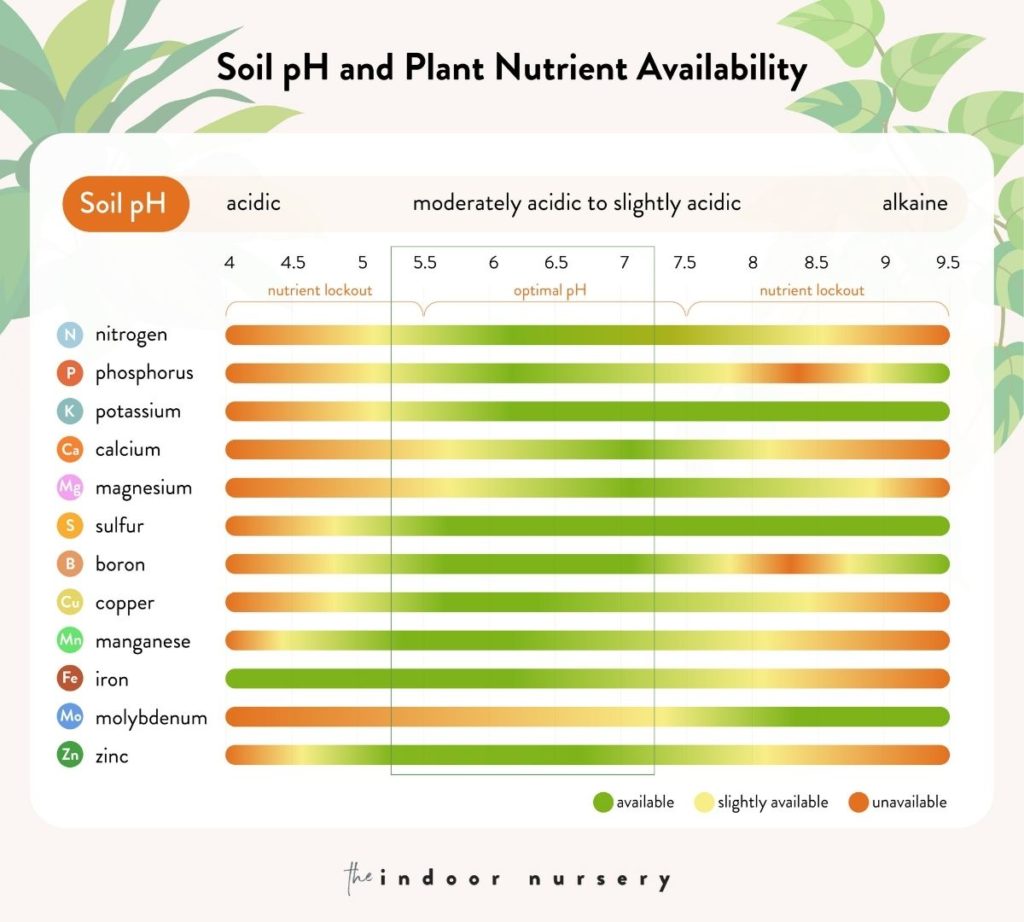
How To Spot Magnesium Deficiency
It can be hard to tell magnesium deficiencies apart from other nutrient deficiencies in cannabis. The main signs of magnesium deficiency are:
- Interveinal chlorosis starting at the oldest leaves
- Edges of leaves turn yellow
- Leaves start to curl upward
- Brown spots appear
- The edges of the leaves feel crispy
What’s interveinal chlorosis? It’s when the veins of the leaves stay green while the space in between turns yellow, giving the leaves a distinctive striped pattern.
The discoloration occurs because without magnesium, the plant can’t make chlorophyll. It starts on the oldest leaves first. This is because magnesium is a mobile nutrient, so the plant starts sending it to the newer leaves. The symptoms we’ve listed are progressive, so if you think a Magnesium deficiency may be occurring, it’s best to not let it get worse.
Here’s how it compares to other common cannabis plant ailments:
Calcium Deficiency: Occurs on younger leaves. Usually occurs right alongside a magnesium deficiency since they are absorbed by the same means. Don’t rule out magnesium deficiency if you spot this.
- Nitrogen Deficiency: This can also cause yellowing in the oldest leaves, but it’s not the same distinctive pattern you see with Magnesium deficiency. Nitrogen issues affect the whole leaf rather than just in between the veins.
- Iron Deficiency: Looks similar, but way more white or almost transparent. Also affects the new leaves rather than the old ones.
- Potassium Deficiency: Edges look burnt more quickly, but this affects the entire leaf. Magnesium deficiency is mostly localized on the leaf.
- pH Issues: Absolutely can cause any number of nutrient deficiencies. Be sure to monitor the pH of your soil as part of your good growing habits.
- Pests & Plant Diseases: Can also cause symptoms that look similar. It’s important to closely observe pests, and if you’re growing outside invest in natural pest controls like neem oil and ladybugs.
How To Treat Magnesium Deficiency in Cannabis Plants
The first thing you want to do is check the pH of your soil. If it’s not within your medium’s ideal range, you need to fix it. You can find pH adjusting products to add to water at your local grow store.
Also check the potassium levels in the soil if it’s too high, it should be 300 ppm maximum. More than that can block your plant’s ability to properly absorb magnesium. If this is the case, flush your plant with pH-balanced water. Give your plant a chance to dry out before giving it more calcium magnesium supplements.
When it comes to adding more magnesium, you can easily find it in two sources. Most people keep magnesium sulphate, aka Epsom salt, in their homes. Cal mag is also commonly sold in stores. If you’re not sure which one to use, cal mag is the way to go. It has the proper calcium magnesium ratio plants need.
That said, if it looks like your plant also needs sulfur you can use Epsom salts. That said, be careful using Epsom salts, too many nutrient salts in the dirt can cause lockout. Flush your plants before adding more salt.
Another great source of calcium and magnesium is dolomite lime. It can help ease a cal mag deficiency and raise the pH of your soil at the same time. It comes in granules, the finer the dolomite lime, the easier it will absorb into the soil. Egg shells are also a great way to naturally boost the calcium of the mixture.
How To Prevent Magnesium Deficiency in Cannabis Plants
- Don’t over water your plants – too much water in the soil makes it difficult for your plants to properly absorb magnesium and other vital nutrients. It also makes it very difficult to flush your plants if there’s a pH issue or too much potassium in the soil.
- Read all the labels of your fertilizers – You can accidentally cause a negative interaction with your fertilizers if you use too many. Our rule of thumb is find a multi-step cannabis nutrient set for your chosen growing medium, and one supplement maximum. Stick to the feeding schedule the manufacturer provides.
- Use neutral pH water – your soil may be fine, but your tap water may not be.
- Monitor the pH levels of your growing medium – pH lock out is the most common cause of all nutrient deficiencies.
Conclusion
Magnesium deficiency can be devastating to cannabis plants. Weed plants need magnesium to photosynthesize for healthy growth. Magnesium deficiency symptoms start on the lower leaves. The lower leaves will get pale and yellow in between the healthy veins. It’s most commonly caused by bad pH in the growing medium.
More about cannabis
- How To Treat A Magnesium Deficiency In Cannabis
- It’s Not O-K: Potassium Deficiency in Cannabis
- How to harvest cannabis (and use the entire plant)
- Male Weed Plant Stages: Don’t Ruin Your Crop
- How To Decarb Weed For Homemade Cannabis Products
- Loving the Ladies: Female Weed Plant Stages
- Patience is a Virtue: Curing Buds for Best Taste
- Understanding weed light cycles: Get the most from your harvest
- When to switch to flower nutrients for high cannabis yield
- How to make live resin at home, step-by-step

